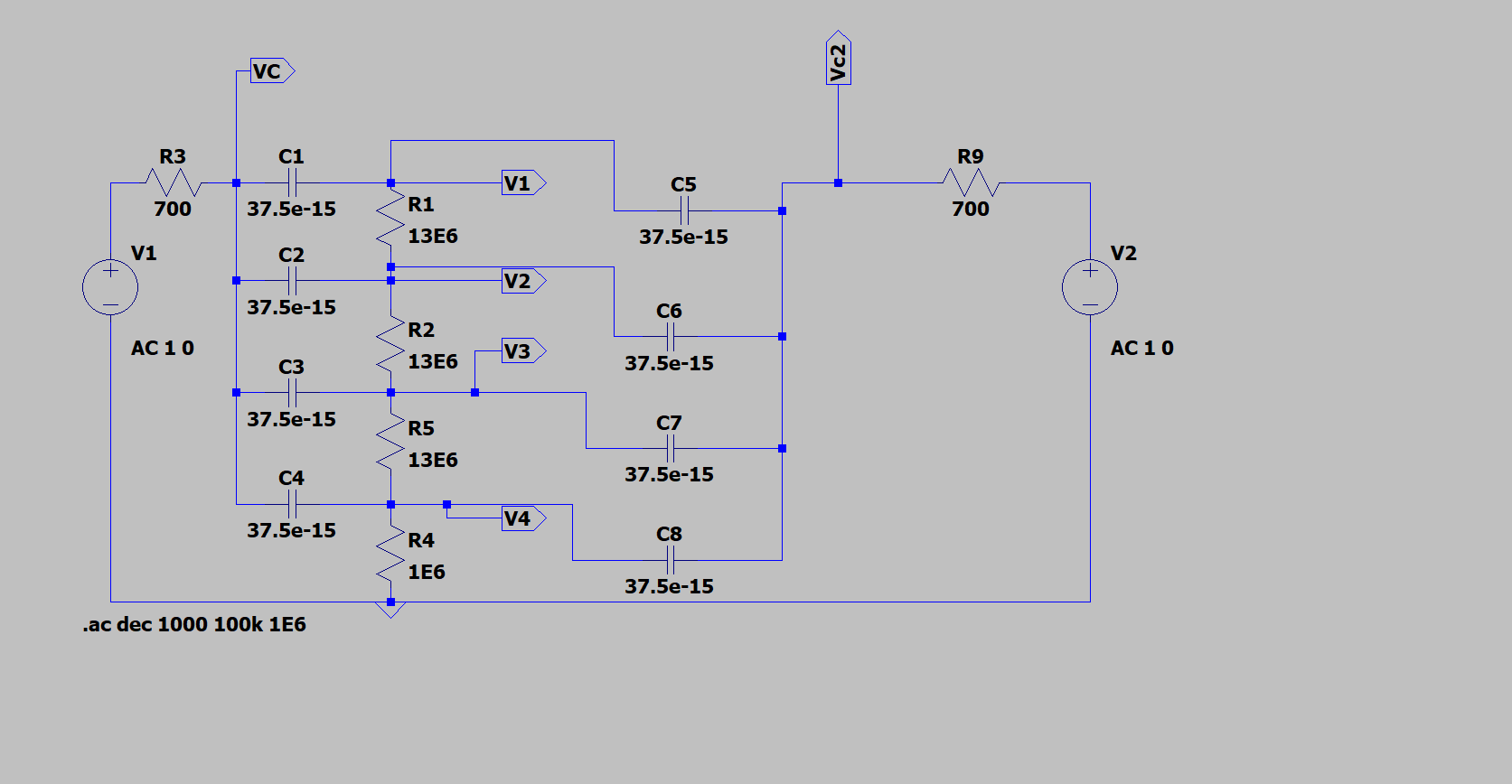I was exploring a lumped approximation of a distributed RC network (sort of a lossy RC transmission line/ladder network).
Everything made complete sense until I observed the voltage "gain", and also the Kirchhoff law not being obeyed.
I probably make some stupid ignorant mistake, and here is the schematic:
I would expect the voltage on the RC ladder going in to cut-off at V1 first, then V2 and so on, ending with V4.
But when I run the simulation (decade AC sweep, 100 points per decade), this is what comes out:
I have a problem with the voltage at V1 being bigger than 1 V. What is even more puzzling is the difference Vc - V1 (which would be the voltage over C1) is not zero when Vc = V1. Is it just because I have multiple sources?
EDIT:
I removed the second source and the problem seems to be resolved. Should I conclude that using multiple sources like this is always a bad simulation setup?





